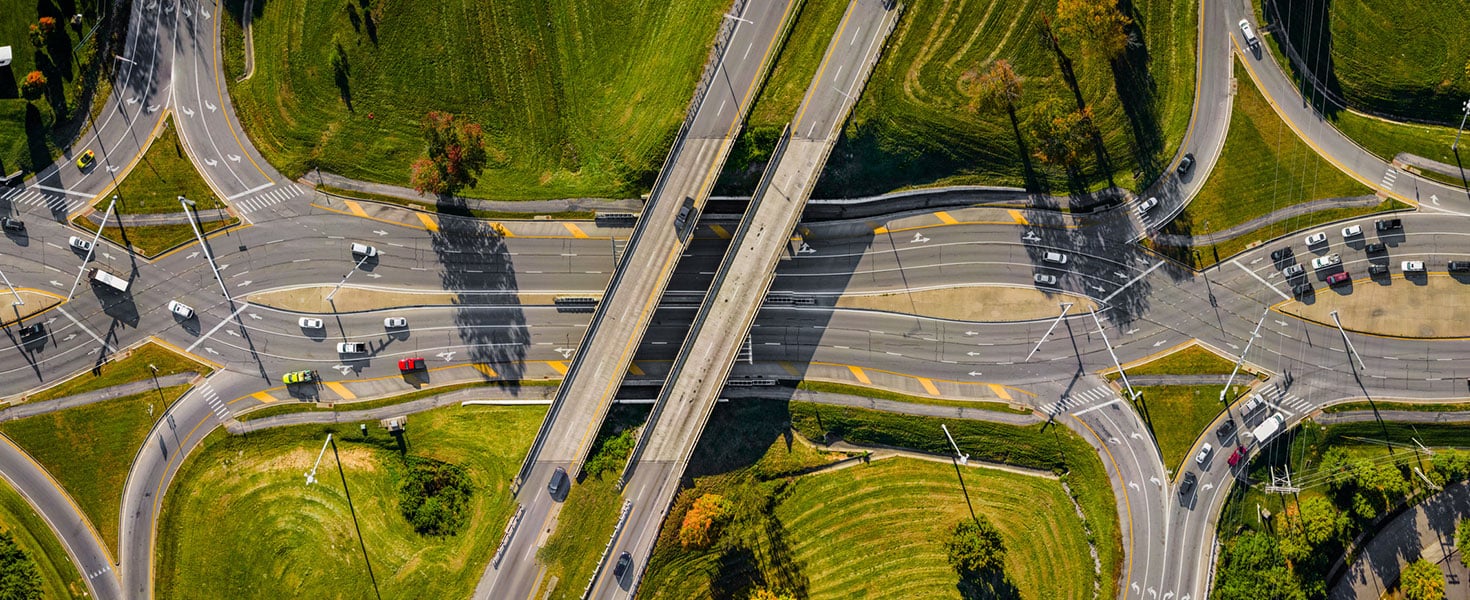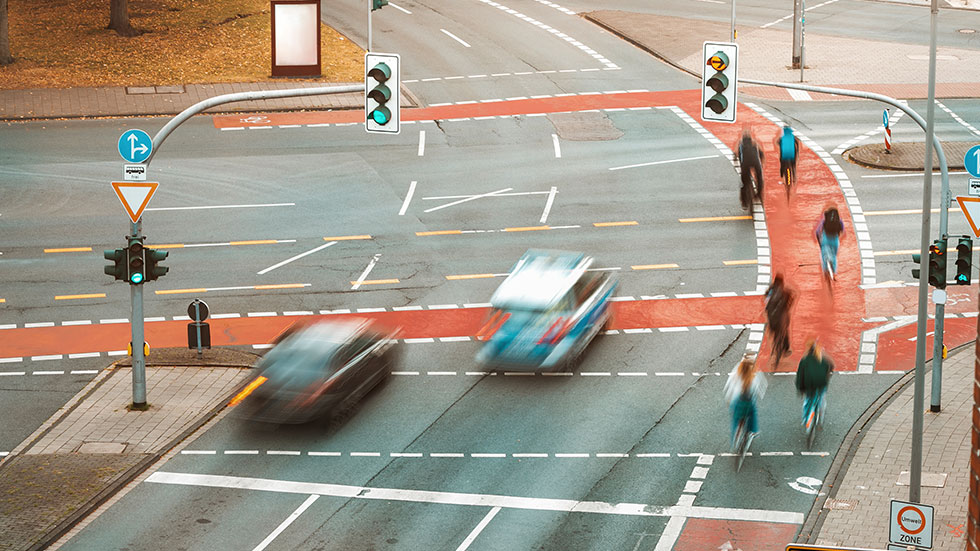Navigating the Latest Traffic Flows
A guide to roundabouts, diverging diamonds, complex intersections, and more


The flow of traffic where we live and work is an integral part of our daily lives. We spend significant amounts of time navigating congested streets, freeways, and roadways.
City planners devote a great deal of time and energy to ensuring traffic flows efficiently and predictably. Planners measure congestion using a variety of factors, including Travel Time Reliability, which is the day-to-day consistency of travel conditions in a given area. By looking at driving conditions over time, they can assess how traffic lights, on-ramps, traffic signs, the number of traffic lanes, and other factors, can be adjusted to support changes in traffic.
In 2005, a report by the Texas Transportation Institute found that congestion levels in 85 of the largest metro areas in the U.S. increased every year among all population groups…and that was nearly 20 years ago. The findings indicated that trips during peak traffic periods were taking an average of 7% longer, with over 50% of freeway mileage on those trips being congested.
In response to these issues, city planners have implemented ways for handling increased traffic on our streets, freeways, and roadways. None of these innovations are new—and many, like the roundabout, have been widely used in other countries but are just now gaining traction in the U.S. Navigating these traffic remedies can be intimidating or challenging to some drivers. Below, we'll take a look at a few ways traffic flow is managed and discuss how you can safely and quickly steer through them.

Right-of-way
Right-of-way laws, which vary by state, refer to the legal right, established by law, of a vehicle or pedestrian to pass along a specific route. In other words, right-of-way establishes the priority of the flow of traffic through any given situation or place.
Often things like signs, signals, or road markings also dictate who has the right-of-way, but as a general rule, pedestrians always have the right-of-way over all vehicular traffic in a given situation. With respect to vehicles, drivers should generally yield the right-of-way to vehicles already in an intersection, understanding that whoever arrives first has the right-of-way. If it is unclear, or drivers arrive simultaneously, right-of-way should always be yielded to the vehicle on the right.

The roundabout
A roundabout is a circular intersection designed to keep traffic flowing at low speed around a central island. The number of multi-lane roundabouts in the United States is rising. According to the Roundabout Database, there are currently about 8,800 roundabouts in use across the country. Safer and more efficient than traditional intersections with stop signs or traffic signals, the circular geometry of the roundabout design is a key factor in keeping speeds low and decreasing accidents.
Drivers approaching a roundabout must yield to all traffic in all lanes currently inside the roundabout, understanding that traffic always flows from left to right. Once the roundabout lane or lanes are clear, a driver can merge inside it and proceed on their way.
Here are three things to keep in mind as you approach and drive through a roundabout:
Slow down
slower speeds allow more time for decisions, better yielding, and improved visibility of pedestrians.
Look around
check signs and markings so you know what lane to select—then select your lane based on where you want to exit the roundabout.
Be ready to yield
you must yield to all traffic in the roundabout, not just the vehicles in your lane.
Diverging diamonds
A diverging diamond interchange temporarily adjusts the flow of traffic so drivers proceed on the left side of the road instead of the right. Typically seen at freeway intersections, diverging diamonds allow high volumes of traffic to move through an intersection without increasing the number of traffic lanes or traffic signals. Diverging diamonds also allow a driver to enter on-ramps without having to make a left-hand turn in the middle of an intersection. Overall, diverging diamonds provide easier access to freeways, with motorists turning right to access the freeway or moving into the left lane to access the on-ramp in the opposite direction.

Other intersections in the US
- 3-Way Intersection—also known as a "T" or "Y" junction, is the convergence of two or three roads.
- 4-Way Intersection—when 2 roads intersect perpendicularly, it's known as a "regular intersection" and when 2 roads intersect at an angle, it's known as a "skewed intersection."
- 5-Way Intersection—when 5 roads intersect, which is relatively rare.
- 6-Way Intersection—is defined as 3 roads crossing 2 perpendicular roads and 1 diagonal road.
- Uncontrolled Intersection—a junction without signs or traffic signals. Drivers encountering an uncontrolled intersection should refer to the right-of-way laws in their state.